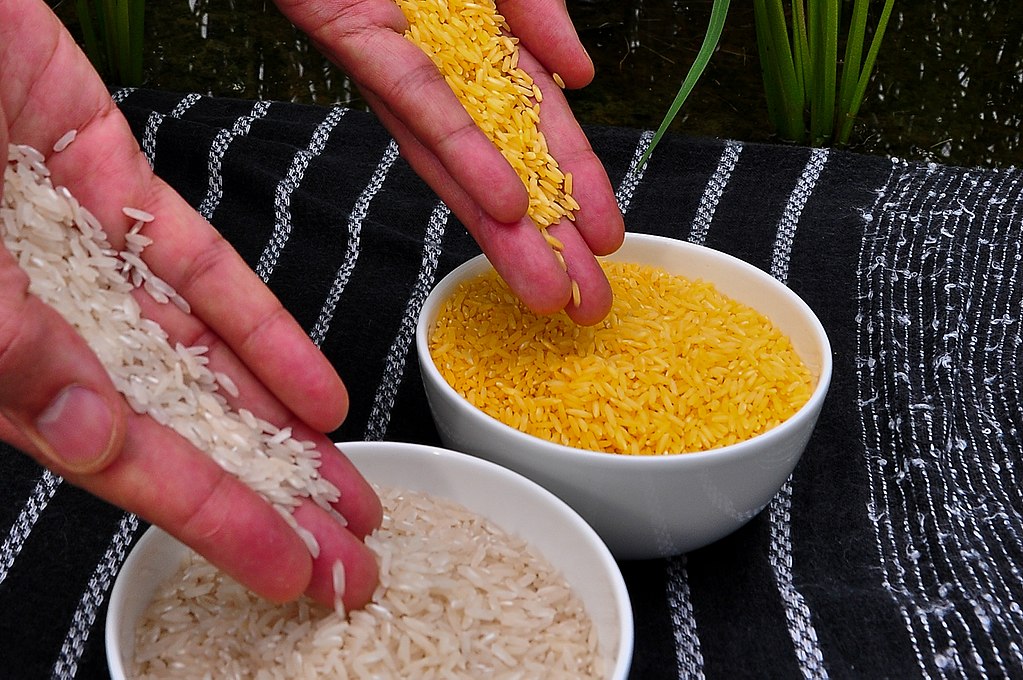
Why GMO labeling laws won't help US consumers make better decisions
It's not if your food was modified that matters. It's how
In summer 2016, Congress passed a bill putting the wheels in motion to standardize the labeling of genetically modified food (GMOs). The bill passed with surprising bipartisan support. It hasn't been rolled out yet, but Democratic lawmakers have been pushing to speed up the process to 'protect consumers.'
Most Americans want GMO labeling and would prefer not to consume GMO foods. There are a number of reasons people claim to oppose GMOs, though most involve safety concerns, environmental concerns, and a fear of what they deem to be "unnatural," a term with no true meaning in agriculture.
While consumers have become more wary of GMOs, scientists, myself included, have become more accepting and more fervent in the belief that GMOs are generally a social good. GMO crops can reduce the need for pesticides and herbicides, improve nutrition, reduce water and fertilizer usage, and lower land usage.
This vast dichotomy in perspectives exists because scientists have, in general, failed to explain how GMOs work to the public. As a result, many people outside of science are asking the wrong question. Knowing simply whether a food is modified does not actually protect consumers. In order to truly understand the complexities of GMO crops, both biologically and ethically, labels must say not if a crop has been modified, but how. Different crops and modifications come with different biological, health, and ethical considerations – each modification may have a different purpose, mechanism, and/or outcome. To lump them together is literally comparing (slow-rotting) apples to (disease-resistant) oranges.
A case of two staples
Let's consider the implications of two specific GMO crops: Bt corn and golden rice. They're both simple grains that are a huge component of many economies and diets, but the issues surrounding them are completely distinct.
Bt corn is a controversial crop that is often cited by opponents of GMOs as an example of an ethically objectionable plant. It has the same genes as any other corn, but it also has the ability to produce small concentrations of the Bt endotoxin, a protein normally found in the soil bacteria Bacillus thuringiensis. This makes the corn edible to humans but dangerous to insect pests that may try to eat it.
Advocates of Bt corn argue that there have been multiple studies on the safety of Bt endotoxin on humans, and none have shown an impact on human health. Beyond official studies, the majority of corn grown in the U.S. is already Bt Corn, it has been for years, and we haven't suffered for it. Bt corn supporters also argue that it saves farmers and consumers from the use and consumption of much more dangerous pesticides. This protects not only consumers health, but also consumer wallets, since pesticide use is associated with heightened prices.
While the argument that Bt corn is unsafe for humans has been debunked, there are other points the anti-Bt lobby make that require consideration. Early studies hinted that there may be a negative effect on bee populations. More recent studies, however, have shown few effects of Bt on bees in a lab or field environment, but there's still too little evidence to know for certain. Another concern is for the safety of butterflies – Bt was initially used to fight against a type of moth, and species like the Monarch Butterfly are closely related. But, again, studies have shown no evidence of danger to butterflies.
Does that mean we can completely dismiss concerns posed by Bt crops to all native insect species? There is evidence that Bt crops will kill off lady bird beetles, something previous studies – funded largely by industry – did not find. However, the implications of the study are not clear in field conditions. If anything, scientists need to gather more information, hopefully quickly and in an unbiased manner.
The ethics associated with eating Bt corn lies with the consumer. They need to know the ecological and social ramifications of their choices. The final decision relies on an informed consumer, not a frightened one.

Golden rice grains compared to white rice grain
Another fascinating case to consider is that of golden rice. Golden rice was developed with the best of intentions: genes were added to the rice genome in order to boost the production of vitamin A. This process involved putting daffodil genes and a gene from bacteria that builds beta carotene into the rice genome in a process similar to that used with Bt corn. Since rice is a staple in humanitarian relief efforts such as those associated with famine or drought, this would create a means to reduce vitamin deficiencies in populations requiring aide. There has been no evidence that golden rice has any health concerns, and there has yet to be any evidence of any ecological consequence of using golden rice instead of other strains.
This has not stopped concern and outrage over its use. Three million pounds of rice were rejected by government officials in 2002 during a famine in Zambia due to concerns about the implications of accepting a GMO. This may be a much more clear-cut case than Bt corn; with the genes increasing the production of an already common nutrient, there is no evidence of environmental degradation or a risk to human health. But the opposition is still very adamant, with groups like Greenpeace continuing to publish online articles against the use of the rice.
Useless labels
So what does labeling propose to solve? Advocates for the current proposals on GMO labeling say that labeling a product genetically modified provides consumers more information. But if a consumer has concerns about local insect populations, Bt crops may be a valid worry while golden rice would not be an issue.
Simply labeling both GMO does not convey any useful information. These are simply two cases of how crops can be modified. How does this apply to other GMO crops such as the Flavr Savr tomato, engineered to rot more slowly than other strains? That crop became wildly unpopular due to safety concerns, although there is no evidence existed of any health risks associated with it. It had modifications unique to the Flavr Savr that were unlike those of the Bt Corn or of Golden Rice. But current proposals for the implementation of GMO labeling would treat them all the same.
The issue with simply labeling things as GMO is that it ends the conversation and does not leave anyone better informed. We could reduce pesticide use, spare children some of the pain of malnutrition, and lower the cost of fresh fruits and vegetables, but we need to consider what is happening in each crop individually. This requires a basic knowledge by consumers of what each modification means and its implications.
But teaching this knowledge is difficult and complicated. Uninformed policy turns a nuanced issue into something with two flavors, GMO or not – black or white. It's a way to end a debate instead of have a necessary conversation, and it's a disservice to potentially useful and innovative science and to a society that can benefit from it.
